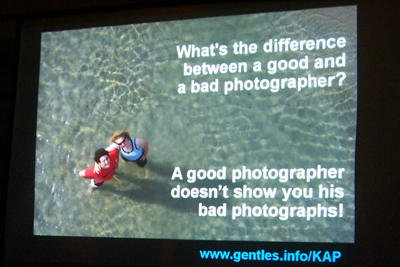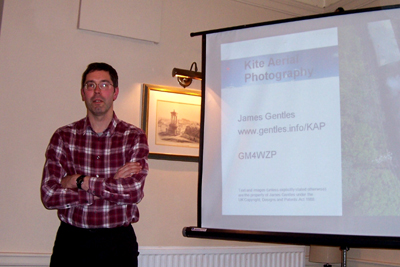
James Gentles GM4WZP presented a comprehensive talk on Kite Aerial Photography (KAP) at the LRS meeting on 23rd January 2013, and drew an excellent attendance of 24. He covered the history of kite photography, the equipment required, how to make it work, and showed beautiful examples of photographs taken by this method which would have been impossible otherwise.
Arthur Batut, a Frenchman is believed to have been the first person to take a photograph from a kite in 1885 and published a book of them. Among others, William A. Eddy followed in 1895 with photographs of New York and George R. Lawrence in San Francisco caught the immediate aftermath of the earthquake in 1906.
While early users employed bulky, heavy glass-plate cameras requiring very large kites to lift them, and providing only a single exposure per flight, modern digital cameras are much lighter, require much smaller kites and can take many photographs. The use of a wide angle- or panoramic lens is essential, with the focus set at infinity. Short exposures of 1/500 sec are necessary to avoid blur caused by the almost constant movement of the camera as it hangs from the kite in the wind. James recommends under-exposing by at least one stop to avoid burning-out the highlights (which could not be corrected for), and then correcting the under-exposure later. The camera is mounted in a rig which provides servo-controlled adjustment of pan (azimuth) and tilt (elevation) via radio-control from the operator on the ground who monitors the camera viewfinder output remotely. For RF communication, the 430MHz band has proven to be more suitable than 2.4GHz in terms of efficiency and receiver design. High-capacity memory cards allow large numbers of exposures to be made, from which the best ones can be selected later. James asked: “What’s the difference between a good and a bad photographer?” Answer: “A good photographer doesn’t show you his bad photographs”!
Descriptions of equipment for kite aerial photography and many beautiful examples (his good photographs!) can be seen on James’s website: http://www.gentles.info/KAP/index.htm
1-minute overview (literally): http://www.gentles.info/KAP/Overview/index.htm
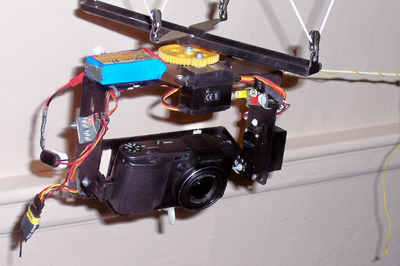
Rig 09: this is a fully-steerable remote-controlled rig with video downlink allowing the operator to point and shoot. The camera is a Ricoh GX200, a lightweight Point and Shoot with reasonable optics. The photo of Cromarty Harbour below was taken with it.
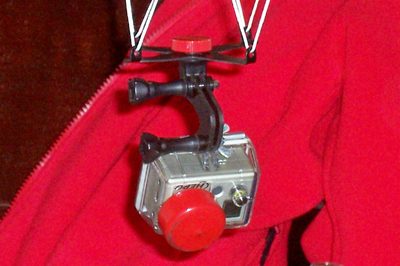
Rig 11: a lightweight “just shoots every 2 seconds” rig which takes 1000s of images. The camera is a GoPro HERO2, a professional quality video and still “micro-camera”with a nice fisheye lens (if you can stand the distortion!). It is amazingly simple but it works! The photograph (below) of Pittenweem Harbour was taken with it.
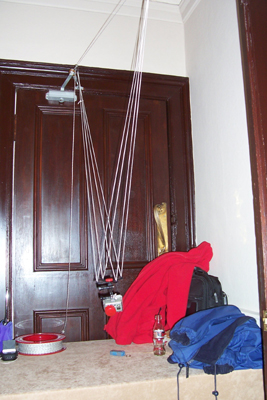
Suspension of camera rig from a kite
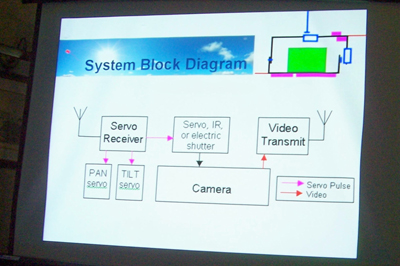
System block diagram
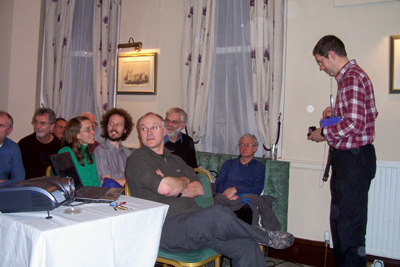
James remotely controls a camera rig while the audience watches.
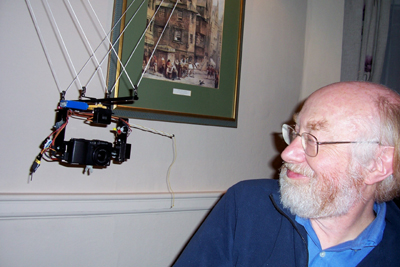
Don’t worry, Brian, it won’t bite (but it is watching you)!
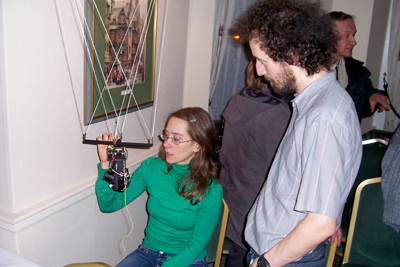
Visitors Rocio and Sean examine Rig 09 with great interest.
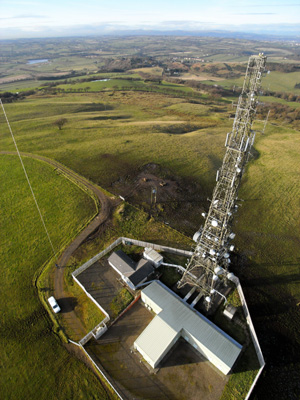
Cairnpapple communications tower in West Lothian © James Gentles
(which coincidentally LRS member Colin GM4HWO worked on the construction of).
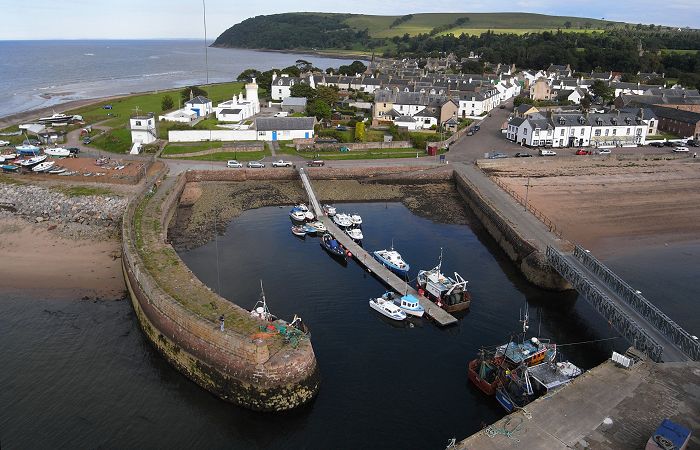
Cromarty Harbour & village, taken with Rig 09 (see text above). © James Gentles
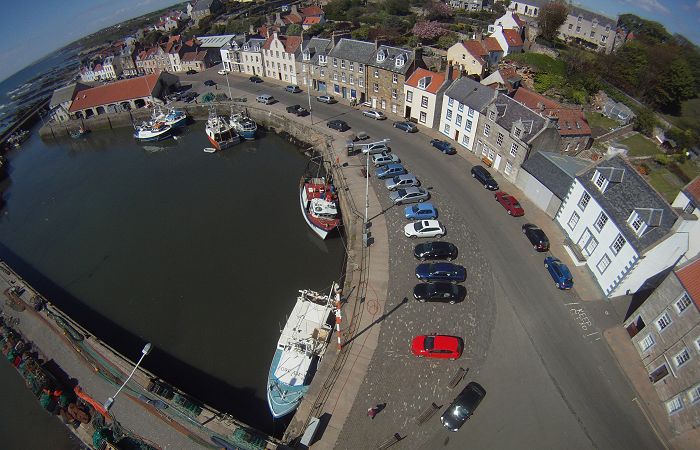
Pittenweem Harbour, Fife, taken with Rig 11 (see text above). © James Gentles
